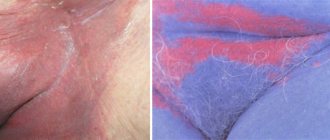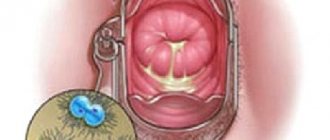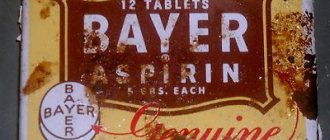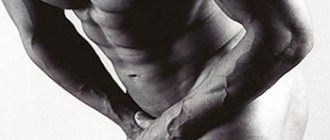Angina is the term used for chest pain caused by decreased blood flow to the heart muscle. Angina is a symptom of coronary artery disease and is typically described as tightness, pressure, heaviness, tightness, or pain in the chest.
Angina is very common. However, it can be difficult to distinguish from other types of chest pain, such as pain or discomfort caused by indigestion. If you have unexplained chest pain, contact your doctor immediately.
Symptoms of angina
Symptoms associated with angina include:
- Chest pain or discomfort
- Pain in the arms, neck, jaw, shoulder or back accompanying chest pain
- Nausea
- Fatigue
- Dyspnea
- Sweating
- Dizziness
Chest pain and discomfort caused by angina can be described as pressure, tightness, pain in the center of the chest. Some people with symptoms of angina describe their chest feeling as if their chest is being squeezed in a vice, while others feel like they have an upset stomach.
The severity, duration, and type of angina may vary. It is important to understand if you are experiencing new, unusual symptoms or chest discomfort. This may signal a more dangerous form of angina (unstable angina) or a heart attack.
Stable angina is the most common form of angina and usually occurs with exercise and improves with rest. If chest discomfort is a new symptom for you, be sure to consult a doctor to find out the cause of the pain and begin treatment on time. If your stable angina worsens or changes, contact your doctor immediately.
Prevention of heart disease
To know how to avoid a particular disease, you need to understand the causes of its occurrence. Angina pectoris is a type of cardiac ischemic disease that occurs due to a lack of oxygen in the heart muscle. This occurs due to narrowing of the heart vessels caused by atherosclerotic plaques. Plaques, in turn, form from cholesterol deposits. Methods for preventing angina pectoris include the following important aspects:
- Quitting bad habits - smoking, drinking alcohol.
- Compliance with the rules of healthy nutrition.
- Minimizing refined sugars, trans fats, and bad cholesterol (formed in fried foods) in the diet.
- Avoiding stress and other excessive emotional overload.
- Maintaining an active lifestyle without exhausting stress - frequent walks in the fresh air will be a good option for spending time with angina pectoris.
- Scheduled consultations and examinations with specialists.
It is also worth remembering to take pharmacological medications aimed at reducing thrombus formation and improving the transport of oxygen through the circulatory system. But such drugs should only be prescribed by a doctor after examination. Self-medication can harm the body.
Causes of angina
Angina is caused by decreased blood supply to the heart muscle. Blood carries oxygen, which the heart muscle needs to survive. When the heart muscle does not receive enough oxygen, it causes a condition called ischemia.
The most common cause of decreased blood flow to the heart muscle is coronary heart disease (CHD). Myocardial ischemia occurs against the background of damage to the coronary vessels by atherosclerotic plaques, narrowing the lumen of the arteries and impairing blood flow. Pain occurs as a result of reduced access of oxygen-rich blood to the heart.
At rest, myocardial oxygen demand is low and angina pectoris may not occur even in the presence of atherosclerosis. But with an increase in physical activity, the heart’s need for oxygen increases sharply, and the affected vessels cannot cope with this task: the myocardial cells starve, and pain occurs.
- Stable exertional angina. Stable angina pectoris is usually provoked by physical exertion. When you climb stairs, exercise, or take walks, your heart requires more blood. But when the vessels are narrowed, the flow of oxygenated blood is insufficient and the heart muscle suffocates. The cause of narrowing of the coronary vessels can be not only atherosclerotic plaques. Emotional stress, cold, heavy foods and smoking can also narrow the arteries and cause pain.
- Unstable angina. Unstable angina occurs as a result of partial blockage of the lumen of the vessel by a thrombus. In this case, blood flow to the heart muscle suddenly and sharply decreases. Unstable angina does not improve with rest or taking medications. If blood circulation is not improved, the oxygen-deprived heart muscle dies. A heart attack (infarction) occurs. Unstable angina is dangerous and requires urgent treatment.
- Variant angina. Variant angina occurs when there is a temporary spasm in the coronary artery. The spasm provokes a narrowing of the artery and a decrease in blood flow to the heart, which causes chest pain. Variant angina can occur, even at rest, and is often characterized by very severe pain that can only be relieved with medication.
Rules for taking nitroglycerin
As part of first aid for an angina attack, you can use both tablets (to relieve an attack outside the home) and drops. The medicine is dropped onto a piece of sugar, which is placed under the tongue and wait until it dissolves. Check the dosage with your doctor, but remember: you cannot take more than 3 tablets (drops) in 15 minutes.
You may feel dizzy, because the effect of the medicine is to dilate blood vessels and reduce pressure. Therefore, before taking, take a comfortable position, sitting or lying down.
Risk factors
The following risk factors increase the risk of coronary heart disease and angina:
- Tobacco use. Chewing tobacco, smoking or frequent prolonged exposure to smokers (passive smoking) damage the inner wall of blood vessels, causing cholesterol deposition, plaque formation and narrowing of the lumen of the vessel.
- Diabetes. Diabetes is characterized by your body's inability to produce enough insulin or respond to insulin properly. Insulin is a hormone secreted by the pancreas that allows the use of glucose obtained from food. Diabetes increases the risk of coronary heart disease, leading to angina and myocardial infarction, accelerating the development of atherosclerosis.
- High blood pressure. Over time, chronic high blood pressure damages the arteries.
- High cholesterol or triglycerides. Cholesterol is a major component of fatty plaques, which can narrow arteries throughout the body, including those that supply the heart. High levels of bad cholesterol, known as low-density lipoprotein (LDL), increases the risk of angina and heart attacks. High triglyceride levels are also undesirable.
- Heredity. If you have family members who have been diagnosed with coronary artery disease or have had a history of heart attacks, you are at higher risk of developing angina.
- Older people. Men over 45 and women over 55 have a greater risk than younger people.
- Lack of exercise. A sedentary lifestyle is a risk factor for high cholesterol, high blood pressure, type 2 diabetes and obesity.
- Obesity. Obesity increases the risk of developing angina and other cardiovascular diseases. Excess weight also puts increased stress on the heart.
- Stress. Stress can increase your risk of angina and heart attacks. The release of hormones produced during stress provokes a narrowing of the arteries and an increase in blood pressure.
Statistical data
Pathologies of the cardiovascular system remain the most common cause of death among Muscovites – 55% of cases in 2019. This figure is three times higher than the European average. The total number of Russian residents suffering from heart disease exceeds 16 million people. A quarter of them have congenital pathologies of the cardiovascular system. Prevention of attacks of myocardial ischemia remains one of the key tasks of cardiologists when monitoring patients at risk.
Complications of angina
Angina pectoris brings many restrictions to a person’s life. Any physical activity can cause pain in the heart, even banal walking can become a burden. But the most dangerous complication of angina is a heart attack.
Common signs and symptoms of a heart attack include:
- A feeling of pressure or fullness, squeezing pain in the center of the chest that lasts more than a few minutes
- Pain that extends beyond the chest into the shoulder, arm, back, or even teeth and jaw
- Increased number of chest pain attacks
- Prolonged pain in the upper abdomen
- Shortness of breath
- Sweating
- Feeling of doom
- Fainting
- Nausea and vomiting
At the doctor's
If you have sudden chest pain (unstable angina), call an ambulance immediately.
If you experience attacks of pain that only occur during physical activity or are at high risk for developing angina due to a family history, be sure to visit your doctor. If your angina is at an early stage, your treatment may be easier and more effective. Your doctor will likely ask you a number of questions. Be prepared to answer them.
- When did you first start experiencing symptoms?
- It is a pain? Discomfort? Pressure? Spicy? Stabbing?
- Where is the pain located? In a certain area?
- Is the pain spreading to your neck and shoulders? How and when did the pain start? Was there anything you did that might have caused the pain? Does it start gradually and build up or did it start suddenly?
- How long does it last?
- What makes the pain worse? Activity? Breath? Body movement?
- What relieves pain? Deep breaths? Peace?
- Do you have other symptoms such as nausea or dizziness?
- Do you have problems swallowing?
- Do you often experience heartburn? (Heartburn can mimic the sensation of angina.)
Holter monitoring
Daily, or Holter, monitoring is a continuous process of monitoring the patient’s heart throughout the day using a special recorder, the data from which is sent to the stationary equipment of the attending physician. This type of ECG allows you to diagnose unstable angina and angina in the absence of symptoms, helps evaluate previously prescribed treatment, records changes in the cardiogram during exercise, stress, sleep, etc. It can be either outpatient or inpatient, it depends on the purpose of the study and the patient’s well-being.
Tests and diagnostics
There are several tests your doctor may use to confirm the diagnosis.
- Electrocardiogram (ECG). An ECG monitors the electrical signals that cause the heart to contract. Your doctor examines the patterns between heartbeats to look for changes in blood flow: whether it is slowing down, interrupted, or developing a heart attack.
- Stress test. Sometimes angina is easier to diagnose when your heart is working under load. During a stress test, you walk on a treadmill or pedal an exercise bike. Your blood pressure and your ECG readings are monitored during your workout.
- Echocardiogram. An echocardiogram uses sound waves to produce an image of the heart. Your doctor can use the images to determine if there are areas in your heart muscle that have been damaged due to poor circulation - the cause of angina. An echocardiogram is sometimes given during a stress test.
- Radionuclide stress test. The radionuclide stress test allows you to evaluate the blood supply to the heart muscle at rest and during stress. In this case, a radioactive substance is injected into the bloodstream and mixed with the blood. A special scanner that reacts to radioactive material scans the heart and creates an image of the heart muscle. Insufficient blood flow to any part of your heart will appear as a bright spot on pictures.
- Chest X-ray. This test takes pictures of your heart and lungs. X-rays can see if your heart is enlarged and can help identify other causes that might explain your symptoms.
- Blood tests. If your heart is damaged by a heart attack, some cardiac enzymes slowly leak into the blood. Blood samples can be tested to see if they contain enzymes.
- Coronary angiography. Coronary angiography uses x-rays to examine the inside of your heart's blood vessels. During coronary angiography, a special dye is injected into the blood vessels, which is recorded by x-rays. The X-ray machine quickly takes a series of pictures (angiograms), offering a detailed look at your blood vessels.
- Cardiac computed tomography (CT). For a cardiac CT scan, you must lie on a table that moves inside the scanner. X-ray tubes inside the machine rotate around your body and collect images of your heart and chest that can show whether you have abnormalities.
Treatment and medications
There are many options for treating angina, including lifestyle changes, medications, angioplasty, and stenting or coronary artery bypass surgery. The goals of treatment are to reduce the frequency and severity of your symptoms and reduce your risk of heart attack and death.
Lifestyle changes
If your angina is mild, lifestyle changes may be all you need to do. Even if your angina is severe, lifestyle changes are worthwhile and will definitely be beneficial. These changes include the following:
- If you smoke, quit smoking.
- If you are overweight, talk to your doctor about weight loss options.
- If you have diabetes, monitor your sugar levels regularly.
- Since angina pectoris is often triggered by exercise, do not exhaust yourself and take rest breaks more often.
- Don't overeat.
- Avoid stressful situations. Of course, this is easier said than done, but try to find ways to relax.
- Eat healthy foods with plenty of whole grains, plenty of fruits and vegetables, and limit saturated fat.
- Talk to your doctor about exercise that is safe for you.
Medicines
If lifestyle changes do not help, you may need to take medication. These may include:
- Nitrates. Nitrates are often used to treat angina. Nitrates relax and dilate blood vessels, allowing more blood to flow to the heart muscle.
- Aspirin. Aspirin reduces the blood's ability to clot, making it easier for it to pass through narrowed vessels. Taking aspirin may also reduce the risk of a heart attack. But don't start taking daily aspirin without talking to your doctor.
- Antiplatelet agents. Antiplatelet agents are drugs that inhibit platelet aggregation, preventing the development of blood clots.
- Beta blockers. Beta blockers block the effects of the hormone epinephrine, also known as adrenaline. As a result, the heart beats slower and with less force, thereby lowering blood pressure. Beta blockers also help blood vessels relax and open, which improves blood flow and thereby reduces or prevents angina.
- Statins. Statins are medications used to lower blood cholesterol levels. They also trigger the use of cholesterol that has already been deposited in plaque on artery walls, helping to prevent further blockage of blood vessels.
- Calcium channel blockers. Calcium channel blockers, also called calcium antagonists, relax and dilate blood vessels by affecting the muscle cells in the walls of the arteries. This increases blood flow to your heart and reduces or prevents angina.
Medical procedures and operations
Lifestyle changes and medications are often used to treat stable angina. But there are also procedures such as angioplasty, stenting and coronary artery bypass grafting that are also used to treat angina.
- Angioplasty and stenting. During angioplasty—also called percutaneous coronary intervention (PCI)—a tiny ball is inserted into the narrowed artery. A balloon is inflated to widen the artery, and then a small wire mesh (stent) is inserted into the damaged artery to hold the artery in place. This procedure improves blood flow to the heart and reduces or eliminates angina. Angioplasty and stenting are good treatment options if you have unstable angina or if lifestyle changes and medications are not effective.
- Coronary artery bypass surgery. During coronary artery bypass surgery, veins or arteries from elsewhere in your body are used to bypass blocked or narrowed arteries in the heart. Bypass surgery increases blood flow to the heart and reduces or eliminates angina attacks. This treatment option is suitable for both unstable and stable angina that has not responded to other treatments.










